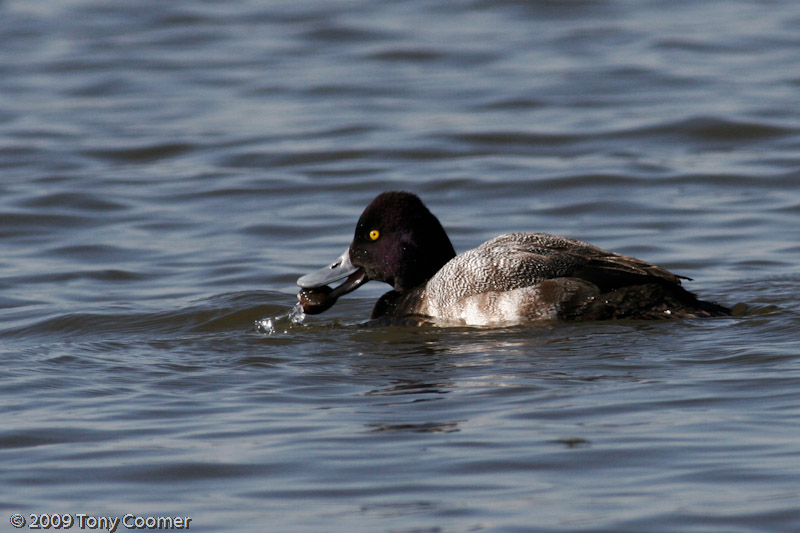Lesser Scaup
Aythya affinis
The Lesser Scaup is a small North American diving duck that migrates south as far as Central America in winter. It has the largest population of any species of diving duck in North America
The adult males have a black head with a purple sheen and a small tuft at the back of the head, a black breast, a whitish-grey back and wings. The under parts are white with some olive wavy lines on the flanks, and the tail feathers are black. Adult females have a white band at the base of the bill, often a lighter ear region, and are otherwise dark brown all over, shading to white on the mid-belly.
Their breeding habitat is inland lakes and marsh ponds in tundra from Alaska through western Canada to western Montana. A few breed east of James Bay and the Great Lakes.
They nest in a sheltered location on the ground near water, usually among thick vegetation such as sedges and bulrushes, sometimes in small loose groups. Several females may deposit eggs in a single nest. The nest is a shallow depression scraped in the ground and lined with plants and some down feathers.
Wintering Lesser Scaup are typically found in freshwater or slightly brackish habitat.
Lesser Scaup forage mainly by sifting through the bottom mud, usually after diving and swimming underwater, occasionally by dabbling without diving. They mainly eat mollusks such as mussels and clams, as well as seeds and other parts of aquatic plants like sedges and bulrushes. In winter, but less so in summer, other aquatic animals such as crustacean, insect and their larvae and small fishes form an important part of their diet.
These birds are not very vocal, at least compared to dabbling ducks. Drakes give the namesake discordant scaup, scaup call. Hens have a guttural brrtt, brrtt.






